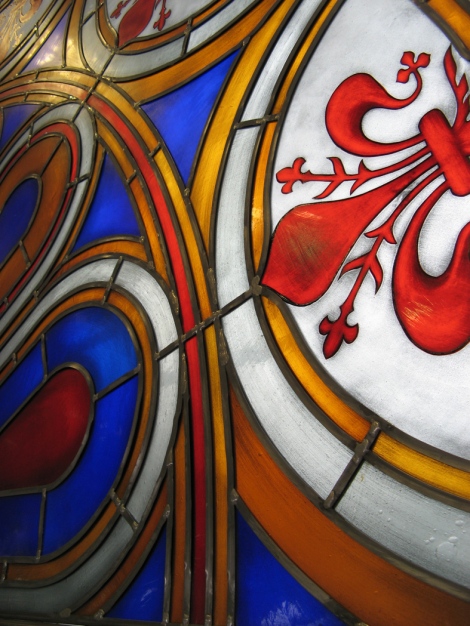
Rosone, vetrata artistica, in Vetro soffiato e piombo realizzato dall’artista Albano Poli
Entering a church, often, our gaze is immediately captured by the colored light of the windows. We look at them unknowingly about their history, and sometimes of their meaning too, but we always remain enchanted in front of the atmosphere they can create in that sacred place.
The artistic stained glass as we know it, with all his blown glasses from the beautiful colors, born together with the Gothic architecture, where architectonic spaces between the tall ribs, were supposed to be closed by a material capable of filter incoming light.
The glass, that couldn’t be blown in large dimension sheet, it was cut and bound with lead cames, a dense metallic net which gave support to the several glass tiles.
The earliest stained glasses, not the one of the big cathedral, one of the small churches or of some houses, should have been like this: without lots of colours, some times made only with transparent glasses or roundels (glass tiles that are produced in their circular form without the necessity of being modelled).
In the big cathedral or churches, especially in the Gothic architecture’s one where places for drawing frescos were almost totally disappeared, stained glasses needed to talk together with the stone, they were supposed to be the “Bible of the poor” that is holy images that describes old and new Testament episodes.
Stained glasses become truly “artistic”, they are painted with grisaille, that is a glass painting that once is cooked in the oven at a very high temperature, it gets fixed irreversibly and tenaciously to the glass. The lead binding defines the lines, figures, geometrics and floral decorations, an intricate plot that makes the light more vibrant and alive.
The artistic stained glasses became so real jewelry embedded in the architecture, unique works that from the medieval times to today talks to us, sing with light melody, that transform with their color a place into a holy place or a room in a more hospitable area.
—
If you are interested on this topic or on the realization of artistic stained glass:
Contact the author
For more information or images of contemporary and classic artistic stained glasses, but even to take a look to other artistic works, visit our website:
PROGETTOARTEPOLI.COM
otherwise, visit our Facebook page SACRED ART or DESIGN for new artistic ideas or to be always updated regarding artistic stained glass’s world.